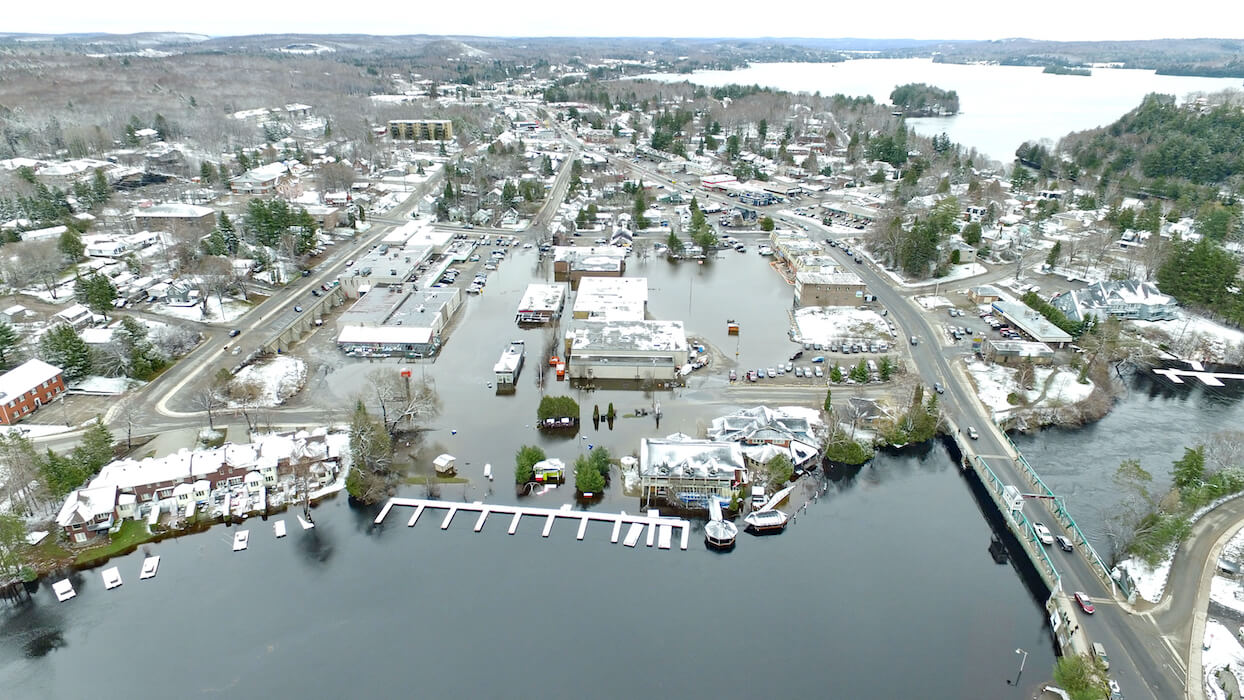Flooded buildings pose a variety of hazards…
so what are the first steps to ensure a safe return?
When flood waters rise, the first concern is always evacuation of those in immediate danger. But once the immediate threat to life has subsided, the insurance community begins to assess the damage. In catastrophic loss situations, the overwhelming amount of damage can be daunting. So, where do you start?

First, it is recommended that no one enters a flooded basement or crawl space alone following such an event. There may be unknown hazards (unexpected debris, displaced sump pump covers, etc.) and assistance may be required. To ensure the safety of those entering, the following initial measures are recommended:
- Inspect the structure for signs of damage
Prior to entry, examine the building from the exterior, looking carefully for significant soil washout, cracks in the foundation / exterior walls, displaced framing relative to the foundation, etc. Once inside (if no significant damage is evident from the exterior), again look for significant cracking (minor or hairline cracks are typical following a flood event) and other signs of structural movement, along with saturation of the drywall finishes, plywood and OSB. A structural engineer may be required if any of the above are noted or if the homeowner or contractor are unsure whether the building is damaged.
- Water and Electricity Don’t Mix!
Ensuring safety when returning to a flood damaged property starts outside the building: check for downed powerlines and call the electrical utility provider immediately if anything is amiss. Submerged or water damaged electrical components can pose a risk of electrocution or fire. Consult with a qualified contractor if you have any concerns before entering the building. Ensuring your electrical system is inspected properly, cleaned, and/or replaced following a flood is crucial to the safety of all occupants. Water infiltrating electrical devices such as appliances, receptacles, and electrical panels will frequently lead to corrosion and damage. Even after they have been thoroughly dried, mineral deposits left on electrical circuit boards can cause arc tracking or short circuits leading to control failures, and corrosion at electrical contacts can lead to increased resistance, heating and the risk of fire.
- Natural Gas Burning Appliances
What might not be obvious is that natural gas appliances should never be restarted until being checked after a flood. One of the first things occupants will want to do upon returning to their homes in cold temperatures is restore heat. However, CSA B149.1 (The Natural Gas and Propane Installation Code) is very specific when it comes to flood damaged equipment: natural gas burning equipment must not be restarted until it has been thoroughly inspected by someone acceptable to the authority having jurisdiction (typically the municipality or province depending on where the building is located). Flood damage can affect many parts of a natural gas burning appliance, including electrical controls, thermostats and high limit switches, motors, burners, and piping. Starting these appliances without having them properly checked can lead to fires, explosions, or equipment failure.
- Environmental Factors
Flooding is often mixed with sewer backups and mold, so it is important to consider multiple environmental factors. In addition to sewer backups, flood water can carry contaminants into the building. If left unmitigated, wet building components can create an ideal environment for mould growth. As such, it is imperative that appropriate removal of finishes and insulation be completed during the restoration of any flood affected building. Depending on the severity of the flooding and the individual situation (including how long the flood waters remained in the home, etc.), environmental testing may be necessary to ensure safe occupancy.
- Long Term Issues
Once the flood waters ebb, the long-term effects on structural components must be assessed. From rot and corrosion, to shifting elements as the groundwater recedes, it can take time for the full effects of the flood to be understood. For example, throughout the winter, the likelihood of frost heaving of saturated soils is increased (depending on geotechnical conditions and weather throughout the winter). If moisture is trapped in the soil until the spring thaw, additional foundation movement may occur / be identified. To prevent long term damage to the foundation and future moisture ingress, the perimeter drainage system (weeping tile) should be scoped or tested for blockages once the waters have subsided. Finally, if the building materials are not properly dried and water remains trapped, wood rot may occur if water is trapped behind building finishes and within insulation.
In addition to the above preliminary considerations, and depending on the site-specific circumstances, other temporary measures, support, repairs (to structural, electrical or mechanical components) and / or testing may be required. The specific requirements and repairs to allow a building to be reoccupied must be determined on a case-by-case basis as there is no standard approach that will work for every building. If you are wondering what the next steps might be, or need help on a specific file, contact our CAT team.
